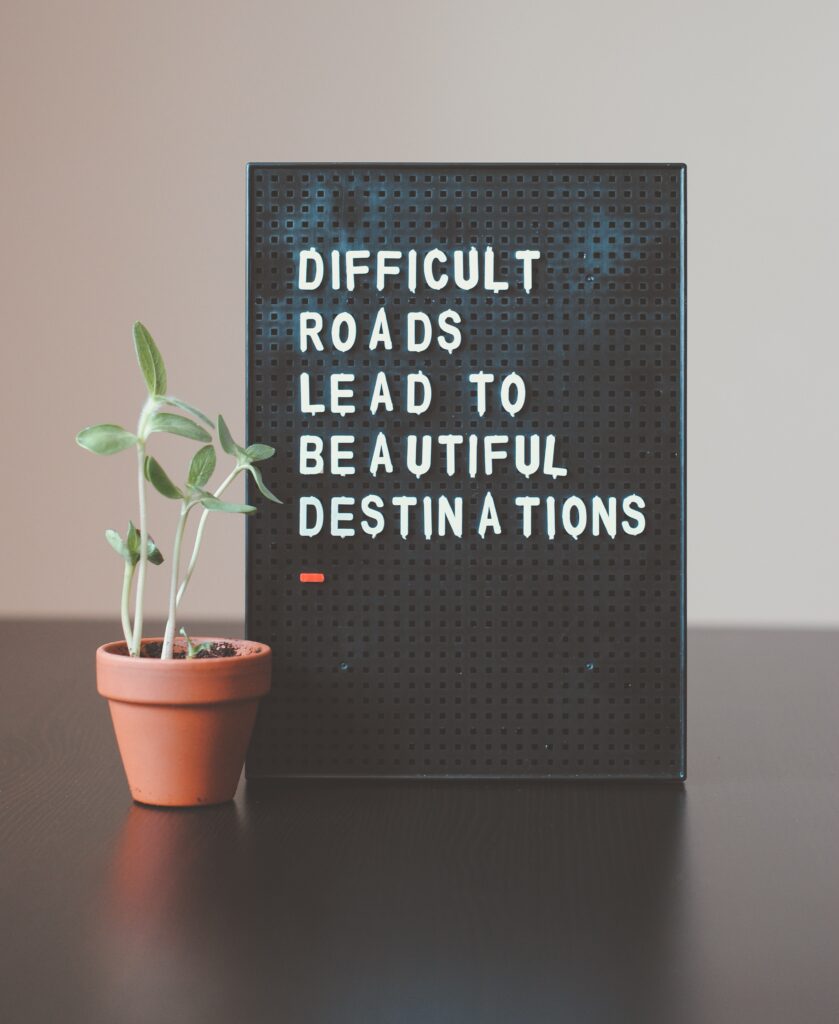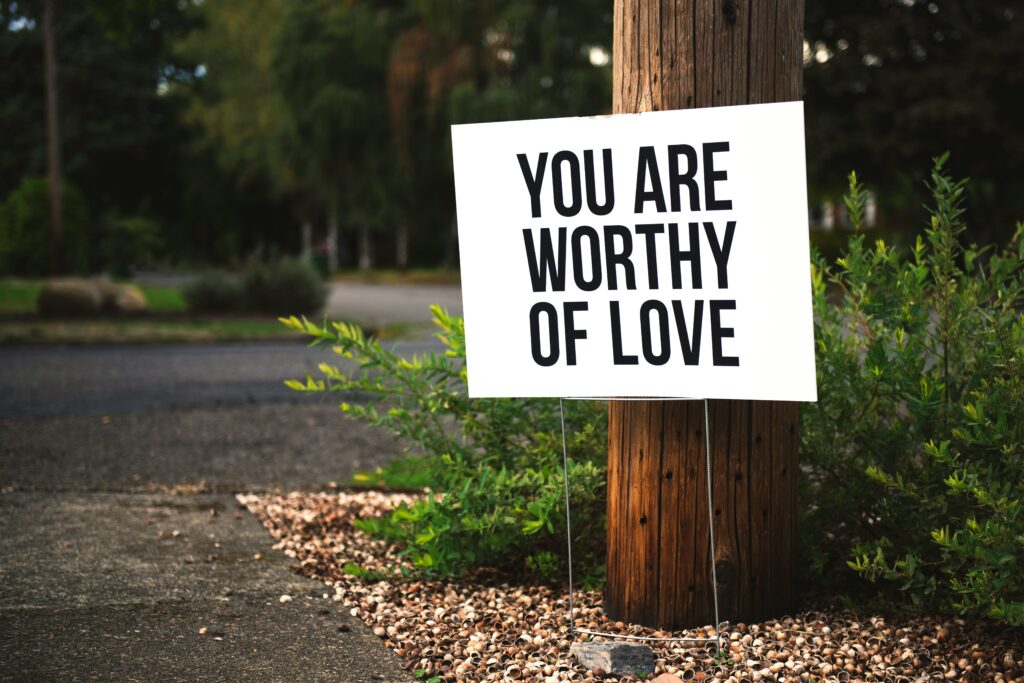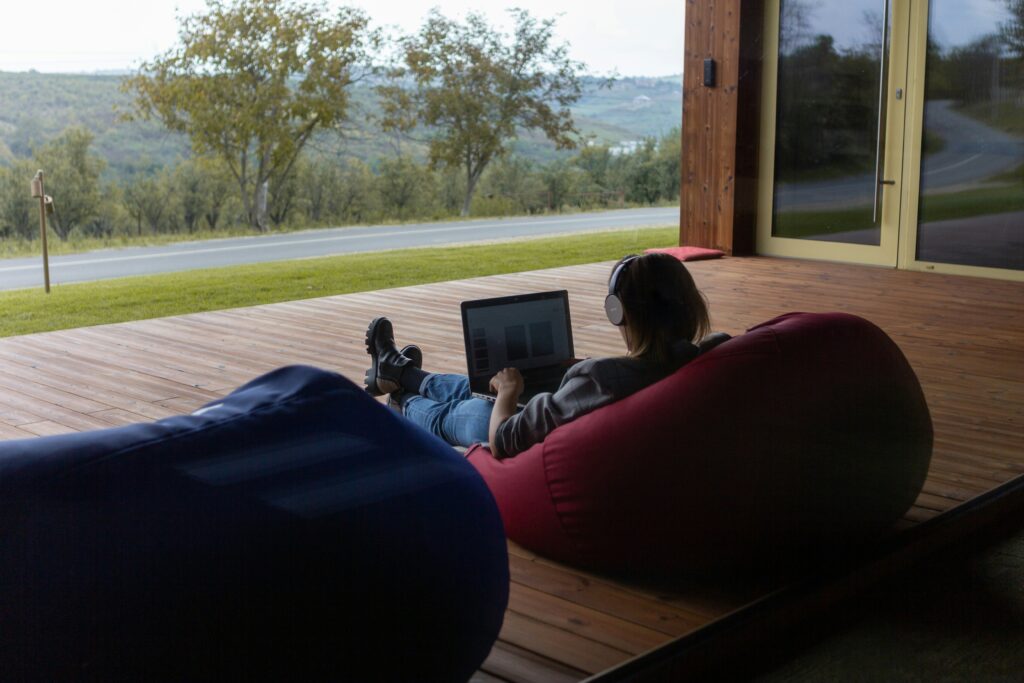
Codependency is a complex and often misunderstood concept that can have detrimental effects on one's well-being. People who are codependent are known for their relentless drive to please others. They often do this at the expense of their own needs and desires. This can lead to a variety of negative outcomes, including low self-esteem, insecurity, and a loss of personal identity. In this blog post, we will explore the signs of codependency and discuss how to recognize and address this harmful pattern of behavior.
Understanding Codependency in Depth
Codependency extends beyond mere people-pleasing tendencies. It roots itself in an emotional and psychological condition where individuals find their self-worth and identity predominantly through the validation and approval of others. Codependent relationships can be between friends, romantic partners, or family members. This condition often stems from deeply ingrained beliefs about self-worth and can be traced back to childhood experiences. This is usually where the seeds of such behavior patterns are planted. In codependent relationships, there is a disproportionate level of giving over receiving. One party often neglects their own needs, desires, and well-being to satisfy the other.
This imbalance leads to a cycle of behavior that reinforces the codependent's belief that their value is intrinsically linked to how much they can support or be of service to others, regardless of the personal cost. Such relationships are not confined to romantic partnerships. It can also be observed in familial dynamics and friendships, illustrating the pervasive nature of codependency across various aspects of an individual's life.
The Pleaser's Plight: Recognizing Your Codependent Patterns

Individuals caught in the web of codependency often find themselves in a relentless pursuit of others' happiness. This is at a significant cost to their own happiness. This relentless drive to accommodate and please can lead to an unhealthy cycle. A cycle where the person's sense of accomplishment and satisfaction is solely derived from the approval and contentment of others. Such individuals may experience difficulty in saying 'no', driven by an underlying fear of rejection or disappointing those they care about.
This pattern not only exhausts them but also prevents them from attending to their own needs and aspirations.
An individual might notice that they're constantly overextending themselves. They notice feeling a compulsion to fix problems for others, and experiencing guilt when prioritizing themselves. This behavior fosters a perilous dependency on external validation, leaving little room for personal development or self-care. The realization of these patterns is crucial for breaking free from the cycle of codependency, steering towards a journey of self-discovery and empowerment.
Key Signs of Codependency to Watch For

Most codependent relationships involve some form of underlying dysfunction. Identifying codependency involves recognizing various symptomatic behaviors and emotional responses that signify an unhealthy reliance on others for self-esteem and validation. One of the hallmark signs is an entrenched pattern of sacrifice. This is where an individual's sense of worth is disproportionately tied to the extent they can cater to the needs of others.
This often coincides with a compulsive need for approval, where constant reassurance and validation from others are sought to feel valued and secure. Additionally, individuals may struggle with boundary setting. They might exhibit an inability to assert their needs or say 'no', often resulting in resentment and personal neglect.
Another indicative sign is the prioritization of others' needs to the detriment of one's self-care. This neglect can manifest in ignoring personal health, interests, and well-being because the person is too preoccupied with tending to someone else. Furthermore, a pervasive fear of abandonment can drive codependent behaviors. Individuals sometimes go to great lengths to avoid rejection or being alone, even if it means staying in harmful situations or relationships. These signs point towards an underlying issue where individuals have tethered their identity and self-worth to their ability to please and be needed by others. It highlights the need for intervention and support to shift towards more balanced and healthy relational dynamics.
The Impact of Codependency on Self-Esteem and Personal Growth
The ramifications of codependency extend deeply into one's sense of self and capacity for personal development. Those ensnared by codependent behaviors often find their self-esteem eroded. Their measure of worth becomes inextricably linked to the validation and satisfaction of others. This dependency on external affirmation leads to a fragile self-concept, vulnerable to the whims and opinions of those around them. As a consequence, the ability to pursue personal interests, ambitions, and growth is markedly stifled. In prioritizing the needs and desires of others above their own, individuals may neglect their personal evolution. They may miss opportunities for advancement and self-improvement. The entanglement in others' lives limits the exploration of personal passions, talents, and the pursuit of goals that are essential for a fulfilling and autonomous life. This neglect not only diminishes self-esteem but also curtails the rich, expansive journey of personal growth that defines a well-rounded and satisfying existence.
Moving Forward: Steps to Overcome Codependency

Navigating the path to freedom from codependent behaviors begins with an awareness of the patterns that have held you captive. The journey involves introspection, commitment, and actionable strategies that foster independence and self-love. Engaging in therapy or counseling plays a pivotal role, offering a safe space to unearth the origins of codependency. It can also equip you with strategies to build resilience and healthier relationships. Emphasizing the importance of boundary setting is crucial. It allows you to communicate your needs and limits clearly, safeguarding your emotional well-being. Prioritizing self-care cannot be overstated—it's essential to nourish your body, mind, and spirit, creating a foundation of strength and self-respect.
Cultivating a robust sense of self that stands independently of others' perceptions or validation is another vital step. This might involve exploring new hobbies, reconnecting with forgotten passions, or simply spending time in solitude to better understand yourself. Additionally, surrounding yourself with a supportive network that honors your boundaries and champions your growth is instrumental in reinforcing the changes you are striving to make. These steps, though challenging, pave the way toward a life characterized by healthy relationships and a deep-seated sense of self-worth. Embrace the process, and remember, each step forward is a step toward a more empowered and authentic you.

Dating can be a challenging and often exhausting experience, especially for those who tend to overthink every interaction and connection. This constant analysis and scrutiny can lead to what is commonly known as dating fatigue, or dating burnout. It is when individuals feel burned out and disheartened by the lack of meaningful connections. When someone starts to feel like they are not good enough for a partner, it can be a detrimental blow to their self-esteem and overall well-being. However, therapy can offer a way to overcome these negative feelings and help individuals navigate the dating world with a fresh perspective.
The Overthinker's Dilemma in Dating
Navigating the dating landscape can be particularly taxing for overthinkers. Each text message, date, and social interaction becomes a puzzle to be solved, with countless outcomes to consider and weigh. This relentless scrutiny often results in a heightened sense of anxiety and a perpetual feeling of being on edge. Overthinkers may struggle to be present in the moment. They instead consumed by the what-ifs and the analysis of every word and gesture. This mindset not only creates a barrier to genuine connections but can also amplify feelings of inadequacy and insecurity.
The fear of making a wrong move or saying the wrong thing can be paralyzing. It can lead to avoidance of potential romantic encounters altogether. As overthinkers dissect conversations and replay scenarios in their minds, they risk falling into a cycle of self-criticism and doubt. They end up questioning their worthiness of love and companionship. This pattern of over analysis makes the journey toward finding a meaningful relationship daunting and seemingly insurmountable at times. Without recognizing and addressing this cycle, overthinkers may find themselves stuck and unable to move forward in their quest for connection. They can become increasingly skeptical of their ability to find someone with whom they truly resonate.
Understanding Dating Fatigue and Burnout

Dating fatigue and burnout stem from the exhausting cycle of seeking a romantic connection without finding fulfillment or progress. This phenomenon surfaces when the quest for companionship becomes a source of stress rather than joy. It often leads to a dwindling enthusiasm for the process. The repetitive nature of going on dates that don't lead anywhere, receiving mixed signals, or encountering the same patterns of incompatibility can erode one's optimism and energy. It's not just the accumulation of disappointments that weigh heavily. It's also the emotional labor involved in making oneself vulnerable again and again, only to face potential rejection.
This continuous loop can make even the most hopeful individuals question the point of continuing their search, creating a sense of isolation and disillusionment.
Burnout manifests differently for everyone. Some may find themselves withdrawing from social activities they once enjoyed. Other people may become cynical about the concept of love and relationships. Others might experience an increase in anxiety or depression, attributing their lack of success in dating to personal inadequacies. This mental and emotional toll is significant. It not only impacting one's dating life but also spilling over into other areas, such as work and personal relationships. Recognizing the signs of dating fatigue and burnout is the first step towards addressing the underlying issues and rekindling hope in the journey toward finding a partner.
The Impact of Feeling "Not Good Enough"
The pervasive sentiment of not measuring up to an ideal partner's standards can deeply affect an individual's mental and emotional well-being. This internal narrative often leads to a hesitancy in initiating conversations, an exaggerated fear of making mistakes, and a tendency to withdraw from potentially fulfilling relationships. Such feelings can prevent someone from showing their true self, as the fear of being deemed 'not good enough' looms large. Consequently, this may result in missed opportunities for genuine connection and contribute to a cycle of loneliness and frustration.
The belief that one is unworthy of affection can also skew perceptions of potential partners. This can make it difficult to recognize when mutual interest and compatibility exist. This skewed perception hinders one’s ability to engage in meaningful relationships. Not only that, but it reinforces the damaging belief that they are fundamentally flawed in some way. By addressing these deep-seated feelings of inadequacy, individuals can begin to dismantle the barriers they have built around themselves. They can finally pave the way for healthier and more satisfying romantic endeavors.
How Therapy Can Offer a New Perspective

In the midst of dating burnout, therapy acts as a beacon of hope. It can guide individuals through the murky waters of self-doubt and frustration. Therapists work to unearth the root causes of clients' struggles with dating, shedding light on patterns of thought and behavior that may be contributing to their feelings of inadequacy. By providing an objective viewpoint, therapy helps individuals to see their experiences in a new light.
A light that is not overshadowed by self-criticism or fear of rejection. Clients are encouraged to reframe their understanding of dating and relationships. This moves the mindset away from imperfection towards one of abundance and self-acceptance.
In this nurturing environment, people learn to recognize the distortions in their perception of themselves as partners. They gradually replace the distortions with more balanced and compassionate views. Therapy offers a pathway out of the cycle of negative self-talk and towards a place of self-awareness and growth. Through discussions and therapeutic exercises, individuals begin to dismantle the barriers they have placed between themselves and potential partners. This fosters a readiness to engage with the dating world in a more open and hopeful manner. This shift in perspective is crucial for overcoming the challenges of dating fatigue, as it empowers individuals to approach relationships with confidence and resilience.
Techniques to Overcome Dating Fatigue
Addressing dating fatigue involves a multifaceted approach tailored to rejuvenate one's mental and emotional state. Therapeutic interventions can introduce cognitive-behavioral techniques aimed at dismantling the negative thought patterns that often perpetuate feelings of burnout. Through this method, individuals learn to identify and challenge the unhelpful beliefs about dating and their own self-worth that keep them trapped in a cycle of disappointment and discouragement.
Mindfulness practices emerge as another vital technique in combating dating burnout. By fostering a present-oriented mindset, individuals can reduce the overwhelming anxiety that comes with overanalyzing past interactions or fearing future rejections. Engaging in mindfulness encourages a focus on the current moment. It allows one to experience dates and social interactions without the heavy burden of expectation or judgment.
Additionally, developing effective communication skills is essential for improving relationship dynamics. Therapy can offer a safe space to practice assertive communication and active listening. These skills not only enhance one’s dating experiences but also contribute to healthier, more fulfilling connections. By learning to express needs and desires clearly and confidently, individuals can navigate the dating world with a greater sense of control and satisfaction.
Incorporating these techniques into one’s life can significantly alleviate the impact of dating fatigue. It can enable a more joyful and resilient approach to seeking companionship.
Rebuilding Self-Esteem Through Self-Compassion

At the heart of healing from dating fatigue is the cultivation of self-compassion. This journey involves treating oneself with the same kindness and understanding one would offer a good friend. This transformative process enables individuals to view their experiences and perceived shortcomings not as failures but as opportunities for growth and self-discovery. Engaging in self-compassion practices, individuals can challenge the harsh inner critic that magnifies feelings of unworthiness and inadequacy.
By nurturing a compassionate inner dialogue, one learns to forgive themselves for perceived missteps in their dating life. They also begin to recognize that experiencing setbacks does not diminish their value or desirability as a partner. Activities such as journaling, meditation, and mindfulness exercises can serve as powerful tools in developing this kinder, gentler approach to self-assessment. These practices encourage a shift in perspective, allowing individuals to celebrate their strengths and embrace their imperfections with grace. Through self-compassion, one rebuilds the foundation of self-esteem, paving the way for a more positive and fulfilling approach to dating and relationships.
Embracing Vulnerability: The Key to Authentic Connections

Therapy provides a valuable space for individuals to explore the power of vulnerability within the realm of dating. Vulnerability, often perceived as a weakness, is in fact a cornerstone of building deeper and more genuine connections. Through the therapeutic process, individuals learn that allowing themselves to be seen—warts and all—is not only brave but also immensely attractive to potential partners who value authenticity. It's about stepping into the dating scene with an open heart and mind.
Being ready to share one's true thoughts, feelings, and desires without the armor of pretense or the fear of judgment.
This embrace of vulnerability can initially feel daunting, given the risk of rejection or misunderstanding. However, therapy aids in navigating these fears by highlighting the strength that comes from being vulnerable and the closeness it can foster with others. Clients are encouraged to approach dating with a willingness to be transparent about their needs, hopes, and dreams, as well as their uncertainties and insecurities. This level of honesty invites authentic interactions and paves the way for relationships built on mutual respect and understanding.
Moreover, embracing vulnerability helps dismantle the notion that one must be perfect to be lovable. It shifts the focus from performing to connecting, from impressing to sharing. In doing so, it opens the door to relationships that are rich in authenticity, making the journey of dating not just a quest for a partner, but an opportunity for personal growth and connection on a deeply fulfilling level.

In the midst of a highly polarized political climate, many individuals across the nation find themselves grappling with heightened levels of voter anxiety and election anxiety. The constant barrage of news coverage, social media discussions, and political debates can leave individuals feeling overwhelmed, stressed, and uncertain about the future. As we approach the upcoming US Presidential Election, it is crucial to address the mental health impact of this turbulent period and explore strategies to mitigate voting anxiety for a restful night.
Understanding the Impact of a Polarized Political Climate on Mental Health
The heightened state of polarization in the United States' political sphere has undeniably ushered in a wave of increased anxiety amongst the electorate. Election anxiety is real, and it can induce everything from insomnia to panic attacks. Anxiety levels rise in the lead-up to an election, peak on election day, and then fall slightly afterward. This era, characterized by sharply divided opinions and relentless streams of often conflicting information, casts a long shadow over individuals' mental health. The relentless exposure to divisive rhetoric and the high stakes attached to political outcomes can foster a breeding ground for stress, fear, and uncertainty. Individuals may find themselves ensnared in a web of worry, attempting to decipher complex political narratives that seem to shift with the wind. This constant state of vigilance, of parsing through information to unearth truth from fiction, exacts a heavy toll on one’s peace of mind.
Amidst this tumultuous backdrop, the emotional and psychological ramifications are palpable. The ceaseless uncertainty and the barrage of polarized viewpoints can lead to a pervasive sense of unease. This can affect an individuals' ability to focus, make decisions, and maintain a sense of normalcy in their daily lives. This psychological strain is not merely fleeting. It seeps into the fabric of one's day-to-day existence, potentially exacerbating pre-existing conditions of anxiety. This all contributes to a heightened state of alertness that wears on the psyche.
In navigating this polarized landscape, the challenge then becomes one of finding a delicate balance - a means to remain informed and engaged without allowing the political climate to overwhelm one's mental equilibrium. It is a tightrope walk of consuming information judiciously, recognizing the impact of political polarization on mental well-being, and taking steps to safeguard one's inner peace amidst the clamor.
The Consequences of Turning Away from Political Engagement

While the allure of retreating from the political fray to shield one's mental health might seem appealing, such a decision carries its own set of repercussions. Individuals who choose to step back from political engagement, driven by a desire to evade the stress and anxiety that often accompanies election seasons, may inadvertently diminish their ability to influence decisions that affect societal and personal realms.
The act of disengaging not only distances them from critical information that could inform their choices and actions but also risks leaving a vacuum where their voices and perspectives are sorely needed.
In a society where every vote and every opinion can contribute to shaping the future, withdrawing from the electoral process can lead to a sense of disconnection and powerlessness. This feeling of being adrift, of lacking agency in the face of significant societal shifts, can exacerbate feelings of anxiety rather than alleviate them. Moreover, this withdrawal from political engagement forfeits the opportunity to be part of constructive change, potentially leaving individuals feeling even more alienated from their communities and the decisions that shape their lives.
The consequences of turning away from political engagement thus extend beyond the individual, affecting the broader fabric of society. When individuals opt out of participating in the democratic process, the diversity of voices that enriches and informs democratic debate diminishes. This reduction in engagement can lead to a less representative and inclusive political landscape, one in which the concerns and needs of various segments of society may not be adequately addressed or heard.
Striking a Balance: Engaging with Care
In the quest to find equilibrium amid the electoral storm, individuals are discovering innovative strategies to manage voting anxiety, ensuring that their engagement with the political process does not come at the expense of their mental health. One critical approach involves a discerning consumption of news, where the focus is on reliable, fact-checked media. This deliberate choice helps mitigate the overwhelming influx of information and the accompanying stress, providing a clearer, more grounded understanding of the political landscape. By limiting exposure to sensationalized narratives and seeking out sources that prioritize accuracy over alarm, individuals can remain informed without being inundated by the constant churn of the news cycle.
Furthermore, this careful engagement extends beyond media consumption to the very essence of civic participation. It encompasses a thoughtful approach to conversations around politics, recognizing the value of empathy and respect in dialogue. In recognizing the diverse perspectives within one's community, there emerges an opportunity to foster connections rather than divisions, even amidst differing viewpoints. This balanced engagement offers a pathway to navigate the charged political atmosphere with a sense of purpose and calm, rather than succumbing to the fray.
Through these measured steps, the act of engaging politically transforms into a practice of self-care, rather than a source of distress. It becomes a testament to the possibility of staying informed and involved, while also safeguarding one's mental and emotional well-being. In this way, individuals can contribute to the democratic process without compromising their peace of mind, navigating the complexities of the current political climate with intention and care.
Prioritizing Self-Care and Mental Well-being

In the whirlwind of election seasons, when the air is thick with debate and the pressure of political outcomes weighs heavily, the importance of self-care becomes paramount for individuals striving to maintain mental well-being. Engaging in self-care practices is not an act of indulgence but a crucial step in ensuring resilience and stability amidst external turmoil.
Individuals find solace in activities that ground them, be it through meditation that quiets the mind, deep breathing exercises that restore balance, or gentle yoga that reconnects the body and spirit. These practices serve as a sanctuary, offering a respite from the relentless pace of political discourse.
Moreover, the foundation of mental well-being is often fortified by the pillars of sleep, nutrition, and physical activity. A commitment to obtaining a restful night's sleep, consuming nourishing foods, and partaking in regular exercise forms a protective barrier against the stressors of the political climate. Such practices not only enhance physical health but are instrumental in mitigating feelings of anxiety and fostering a sense of inner peace.
In a time when external forces seem beyond one's control, prioritizing self-care and mental well-being becomes an act of empowerment. It is a deliberate choice to carve out spaces of tranquility and nurture resilience, ensuring that individuals remain steadfast, not only in the face of the current political maelan, but in all challenges that life may present.
Navigating Conversations and Relationships in a Polarized Environment

In an era where political divisions run deep, individuals often find themselves at a crossroads in conversations and relationships. This may lead to differing views which can easily escalate into conflict. Political party has become a strong social identity. Election anxiety is impacting friendships, families, and even personal mental well-being.
The art of maintaining harmony within these interactions lies in the cultivation of empathy and open-mindedness. It demands a willingness to listen actively, fostering an environment where divergent perspectives are not just tolerated but valued for the depth they add to the dialogue.
Setting healthy boundaries emerges as a critical skill, enabling individuals to engage in meaningful discussions without compromising their emotional well-being. By establishing limits on the nature and extent of political discussions, individuals can protect their mental space. This can ensure that exchanges remain respectful and constructive.
The pursuit of common ground is another vital strategy. It encourages focusing on shared values and goals, rather than fixating on the points of disagreement. This approach not only bridges divides but also strengthens connections, affirming that at the heart of many relationships lies a mutual desire for understanding and respect.
In navigating these interactions, individuals foster a climate of mutual respect. Conversations between these individuals are seen as opportunities for growth and connection. Through this mindful approach, relationships can thrive, even amidst a landscape marked by polarization. It can nurture a sense of unity in an otherwise divided world.
Moving Forward with Resilience and Hope

As society continues to traverse the choppy waters of the current political climate, the embodiment of resilience and hope stands as a guiding light for many. The cultivation of these qualities, deeply intertwined with the conscious efforts to manage mental health and prioritize self-care, illuminates a path forward through the tumult. It is within this journey that individuals discover the strength to face the uncertainties of the political landscape with a steadfast heart and a clear mind. Engaging with the world around them with empathy and thoughtful consideration allows for a compassionate dialogue that transcends division. It fosters a sense of community and shared purpose.
This commitment to navigating challenges with grace and optimism nurtures personal growth and contributes to the collective well-being of society. In embracing a future marked by resilience and hope, individuals can find solace in their ability to adapt and thrive. This can be regardless of the external environment. This forward movement, powered by a collective desire for understanding and connection, heralds a brighter, more inclusive future where dialogue and empathy pave the way for healing and unity.

Have you ever considered how our physical surroundings shape our feelings about ourselves
and others? How a lack of natural light can (negatively) impact our well-being? You’ve
probably considered all of this but haven’t taken steps to change your environment. To
inspire you to create a sanctuary of your own at home, today we’ll show you how to design a
sensory room for stress relief and calm. Stay tuned to learn how to transform your space into
a serene retreat that promotes relaxation and peace. With a few thoughtful changes, you can
make your home a place of tranquility.
What is a sensory room?
According to Edutopia, a sensory room is a therapeutic space with a variety of equipment that
enhances a person's senses through, among other things, special lighting, soothing music, and
engaging objects. This environment helps children relax and concentrate, making them better
prepared for learning and social interactions. Sensory rooms are versatile and can be used for
prevention, crisis de-escalation, and various therapeutic activities. Their main purpose is to
promote self-care, compassion, resilience, and recovery and offer a serene retreat where
individuals can relax and rejuvenate.
Often used in (but not limited to) therapy for children with communication issues, spectrum
disorders, sensory processing issues, or conditions like OCD, these rooms serve a broader
purpose. They create a safe, calming environment that helps with self-organization and
positive change.
In addition, sensory rooms offer both kids and adults with OCD or other abovementioned
conditions a structured, calming environment that reduces anxiety through soothing sensory
experiences and structured activities. Of course, while highly beneficial, a sensory room
shouldn’t be the only tool to rely on, especially in more dire cases. It’s very important to
recognize symptoms of OCD on time and treat them with the help of a professional for the
best results.

How to create a sensory room for stress relief and calm
A sensory room can be valuable for emotional and mental well-being with the right design.
That’s where we come in: we'll show you how to design your space carefully and
thoughtfully. We'll also explore how to subtly give your entire home the calming feel of a
sensory room without making it obvious, and you’ll learn how to transform your home into a
serene and soothing environment subtly.
Opt for natural lighting
Natural lighting in a sensory room can relieve stress and promote calm. Our suggestion: pair
natural light with neutral-colored curtains. That way, you can create an atmosphere that
fosters a sense of tranquility. Many homes suffer from a lack of natural light, have rooms
with zero windows, etc. To counter this, ensure that natural light reaches every corner of your
home, not just the designated relaxation space. Windows are your best ally, so always find
ways to let in as much natural light as possible. This simple yet effective approach can
transform your home into a more peaceful and inviting sanctuary.
If bringing natural light into every corner of your home isn't possible, ensure that your
sensory room – in other words, the main relaxation space – receives ample natural light.
Color green to the rescue! (nature’s tranquilizer)
Adding plants can significantly boost the relaxation appeal of any room. The color green –
nature’s tranquilizer – soothes both body and soul. There's a reason for the saying, "Green
rests the eyes." Just think about how we react to lush outdoor locations and associate this
color with peaceful moments in nature. Incorporating greenery into your space enhances its
aesthetic appeal and creates a calming environment. Plants help purify the air, reduce stress,
and promote well-being. So, bring the tranquility of the outdoors inside and transform your
home into a serene retreat.
Just don’t forget to water your plants now and then, depending on their individual needs.

How about some music?
Transform your sensory room into an audiophile's retreat with top-notch musical equipment
and relaxing ambient tunes. Music and sound play a crucial role in enhancing the calming
atmosphere of a sensory room. In truth, according to a study by the American Music Therapy
Association, music has been shown to significantly reduce stress and anxiety levels, making
it an ideal addition to any relaxation space. So, whether you prefer soothing ambient music
(our suggestion: Brian Eno’s Thursday Afternoon), 90s soul, or jazzy hip-hop, the right
soundtrack can significantly aid in relaxation. Also, consider incorporating white noise to
help unwind further.
Soundproofing the room (using solid curtains, thick rugs, or egg cartons) can help reduce
outside noise and further enhance the peaceful environment, making your sensory room a true
sanctuary for the senses.
Additional ideas to enhance your relaxation space
In addition to the basic tips mentioned above, we'd like to introduce some additional ideas for
creating a sensory room for stress relief and calm.
Add some bean bag chairs to your chill-out space
Bean bag chairs provide a cozy and secure seating option many love for comfort. With
various sizes and materials, finding one that suits your chill-out space the most is easy.

Talking about furniture…
Besides bean bag chairs, which we've already mentioned, consider choosing soft, plush chairs
and sofas for relaxation, and include floor cushions for interactive sensory play. Ensure all
furniture has rounded edges for safety, and select sturdy tables and desks at appropriate
heights, with adjustable options if needed. Add shelves or cabinets for storing sensory toys
and equipment, keeping everything organized and easily accessible. This approach ensures
your chill-out space is cozy, safe, and functional for everyone.
Bubble wall panels
You can empower your chill-out zone by adding bubble wall panels. These panels are known
for their soothing qualities, which many people nowadays appreciate. These panels create a
calming ambiance with gentle bubbles and soft lighting, making them a popular choice for relaxation spaces. Incorporating bubble wall panels adds a serene visual element and contributes to a peaceful atmosphere where you can unwind and destress effortlessly.
Conclusion
To summarize, you can do much to create and enhance your sensory room for stress relief
and calm. Whether you make the most of natural lighting, incorporate greenery in various
plants, or add stylish furniture like bubble wall panels, the key is designating a place to let go
of your troubles and dark thoughts and completely relax.
When it comes to self care, finding a welcoming and inclusive environment is essential for relaxation and rejuvenation. For members of the LGBTQ+ community, this is especially important as they deserve to feel safe and accepted while taking a break from the stresses of everyday life. Fortunately, there are plenty of destinations on the East Coast that cater to LGBTQ+ travelers, offering a welcoming and inclusive environment for self care escapes. Here are the top 5 LGBTQ+ welcoming spots on the East Coast that are perfect for a rejuvenating getaway.
Provincetown, Massachusetts - A Haven of Arts and Acceptance

Nestled at Cape Cod's northern tip, Provincetown beams as a beacon of creativity, welcoming a vibrant community of artists, writers, and LGBTQ+ individuals. This picturesque town is a tapestry of cultural richness. It is where every street and corner tells a story of acceptance and diversity. Its unique charm is amplified by an array of art galleries, eclectic boutiques, and cozy cafés, each offering an experience steeped in inclusivity. Provincetown thrives as a cultural hub, inviting visitors to immerse themselves in its artistic ambiance and liberal spirit.
The town is famed for its dynamic LGBTQ+ events that draw visitors from across the globe. The Provincetown International Film Festival is a highlight, showcasing diverse stories through the lens of talented filmmakers. Meanwhile, the Provincetown Carnival erupts in a kaleidoscope of colors, celebrating diversity with parades, costumes, and performances that embody the town's inclusive ethos. These events, among others, weave a sense of community and celebration, making Provincetown an unmatched destination for those seeking solace and self-expression.
The embrace of the LGBTQ+ community here is palpable, with venues and spaces designed to foster connections, creativity, and relaxation. Whether one is seeking inspiration through art, the joy of a shared celebration, or a quiet moment of reflection by the sea, Provincetown extends an open invitation. Its commitment to creating a safe and accepting environment encourages visitors to explore their identities. engage with like-minded individuals, and indulge in the town's cultural offerings at their own pace.
In Provincetown, every day is an opportunity to experience the vibrancy of life without reservation. Its inclusive atmosphere not only nurtures self-care but also champions the importance of community, making it a sanctuary for anyone looking to replenish their spirit amidst a backdrop of artistic and cultural abundance.
New York City, New York - The Melting Pot of Diversity

New York City stands as a dynamic hub of diversity, offering an open and inviting atmosphere for LGBTQ+ individuals in search of self care and liberation. The city's vibrant energy and boundless inclusivity make it an ideal destination for those wishing to immerse themselves in an environment where every identity is celebrated. With an array of neighborhoods each showcasing their unique flavor, the city is a mosaic of cultures and expressions.
Hell's Kitchen, another emblematic locale, pulsates with an eclectic nightlife and diverse culinary scene that cater to all tastes and persuasions. Its theaters and comedy clubs offer spaces where laughter and camaraderie flourish. It invites visitors to partake in the joy of shared experiences.
Moreover, New York City's commitment to LGBTQ+ rights and visibility is evident in its annual Pride celebrations. The city transforms into a dazzling spectacle of love, resilience, and unity. The streets come alive with parades, festivals, and art installations that showcase the strength and beauty of the community.
Amidst the skyscrapers and the relentless pace of the city, there exist countless opportunities for connection, reflection, and renewal. From tranquil parks to avant-garde galleries, New York City provides a backdrop against which individuals can explore aspects of identity, culture, and self-care, all within a framework of inclusivity and respect. Here, the spirit of diversity fuels not just a sense of belonging. It is also a profound celebration of life's multifaceted expressions.
Rehoboth Beach, Delaware - A Quiet Escape
Rehoboth Beach stands out as a tranquil haven, offering a gentle reprieve from the hustle and bustle often found in larger cities. This coastal gem in Delaware is renowned for its inviting atmosphere, catering to those in the LGBTQ+ community seeking peace and relaxation. The allure of Rehoboth Beach lies in its simplicity and the quiet acceptance found within its community. The broad, sandy beaches provide a perfect setting for meditation, sunbathing, or reading a favorite book. It allows visitors to reconnect with themselves in a serene environment.
The town's boardwalk, with its old-world charm, is lined with family-owned shops, inviting eateries, and galleries that showcase local art, reflecting the town's inclusive spirit and support for LGBTQ+ individuals. Beyond the beach, Rehoboth Beach is home to a variety of accommodations and venues that proudly serve the community. It offers everything from cozy bed and breakfasts to vibrant nightlife options. These establishments not only provide a safe space for travelers but also foster a sense of belonging and connection among guests.
For those looking to indulge in self-care, the town's wellness centers and spas offer a range of services designed to pamper and rejuvenate. Whether it's a relaxing massage, a yoga class overlooking the ocean, or a leisurely bike ride through scenic trails, Rehoboth Beach provides ample opportunities for self-reflection and renewal. This destination embodies the essence of a quiet escape, where one can easily find solace and joy in the natural beauty and warm community spirit.
Asheville, North Carolina - The Gem of the Blue Ridge

Asheville, North Carolina, offers an enchanting retreat nestled amidst the Blue Ridge Mountains' verdant landscapes. This city, known for its welcoming spirit and eclectic charm, presents an ideal self care sanctuary for LGBTQ+ travelers. Asheville's vibrant arts scene is a testament to the city's culture of inclusivity, with galleries, live music venues, and theaters showcasing the creative talents of local artists and performers. The city's commitment to celebrating diversity and fostering an open community can be felt in every corner. It makes it a place where visitors can freely express themselves and find solace.
Food enthusiasts will revel in Asheville's burgeoning culinary scene. This features an array of farm-to-table restaurants and food festivals that cater to every palate. The city's emphasis on sustainability and local produce adds a meaningful dimension to the dining experience. It invites guests to indulge in flavors that are both delightful and ethically sourced. Moreover, Asheville's numerous craft breweries offer a cozy ambiance for socializing and sampling innovative brews in settings that are both inviting and inclusive.
For those seeking adventure and rejuvenation in nature, the surrounding Blue Ridge Mountains provide a spectacular backdrop for outdoor activities. Hiking trails wind through scenic vistas, offering breathtaking views and moments of reflection. The area's natural hot springs are a must-visit, offering a unique opportunity to relax and rejuvenate in a serene, natural setting.
Asheville's friendly community and array of wellness-oriented activities make it a haven for LGBTQ+ travelers. Especially people looking for a self care escape. From engaging with the arts to enjoying the natural beauty and culinary delights, Asheville provides a diverse and welcoming environment for all who visit. This ensures a memorable experience that nurtures both body and soul.
Key West, Florida - Tropical Inclusivity

Key West is a beacon of warmth and acceptance, casting a wide embrace over anyone seeking a tropical retreat that champions inclusivity. This island paradise is distinguished by its laid-back demeanor and a vibrant community spirit. It makes for an idyllic spot for LGBTQ+ individuals looking for a mix of adventure, relaxation, and self-care. The eclectic mix of cultures and histories has woven a rich tapestry that celebrates diversity at every corner. This includes the bustling Duval Street to the quiet, palm-lined neighborhoods.
The town's legendary openness is reflected in its variety of events and festivals specifically catering to the LGBTQ+ community. This includes the famous Key West Pride and the whimsical Fantasy Fest. It fills the streets with a riot of colors, music, and costumes, emphasizing unity and freedom of expression. Key West's commitment to creating a welcoming atmosphere is evident in its array of accommodations, eateries, and bars that not only welcome but celebrate LGBTQ+ guests.
For those in pursuit of tranquility and natural beauty, Key West does not disappoint. The island is surrounded by the clear blue waters of the Gulf of Mexico and the Atlantic Ocean. It offers endless opportunities for snorkeling, sailing, and kayaking in peaceful settings that encourage introspection and connection with nature. The lush, tropical landscape and the gentle rhythm of island life provide a soothing backdrop for mindfulness and rejuvenation.
Moreover, Key West's historical charm, from the Hemingway Home and Museum to the iconic Southernmost Point buoy, adds layers of exploration and discovery to the visit. It enriches the self-care journey with cultural and historical insights.
In Key West, the spirit of inclusivity permeates every experience. It invites LGBTQ+ travelers to unwind and celebrate in a setting that respects and honors their identities. It stands as a testament to the power of community and the importance of spaces that prioritize openness, acceptance, and the well-being of every individual.

Teen anxiety is a serious issue that affects many young people today. It can be even more challenging for those who identify as part of the LGBTQA+ community. As parents, it is our responsibility to support and protect our teens as they navigate the world before them. This is especially when they are already vulnerable due to the often misjudged view of sexual orientation or gender identity. In this blog post, we will explore how parents can best support their LGBTQA+ children who may be struggling with anxiety and depression.
Understanding Your Teen's World
Delving into the world of your teen, especially one who identifies with the LGBTQA+ community, demands a concerted effort to comprehend their unique perspectives and experiences. This journey begins by creating a nurturing environment where your child feels safe to express their thoughts, worries, and victories. Engaging in meaningful conversations with your teen allows you to grasp the nuances of their daily life. This includes the joys and challenges specific to their identity. Acknowledge and validate their emotions, demonstrating empathy and genuine interest in their wellbeing. It's also beneficial to familiarize yourself with the social dynamics and potential pressures they face, whether in school, online, or in broader society.
This insight can guide you in offering more targeted and effective support. Engaging with the content they consume, whether it's books, movies, or social media, can provide valuable context. It can also open up opportunities for discussions about representation, acceptance, and resilience. Remember, understanding your teen's world isn't about making assumptions based on your experiences. It's about listening, learning, and adapting to their individual needs and realities.
The Importance of Open Communication

Fostering a dialogue where feelings and fears can freely flow between you and your LGBTQA+ teen is paramount. Encouragement for them to share their innermost thoughts without fear of judgment or dismissal lays the foundation for trust and mutual understanding. This act of sharing becomes a powerful tool for reducing the burdens of anxiety and promoting a healthier emotional landscape.
As a parent, your role is not to have all the answers. It is to listen with an open heart and mind, offering guidance when asked and always extending compassion.
Remember, conversations should be a two-way street. It is important to allow your teen to voice their concerns, as well as you sharing your feelings and thoughts. This level of exchange deepens the connection between you and your child. It provides them with the reassurance that they are not alone in their journey. To facilitate these discussions, consider setting aside regular, uninterrupted time to check in with your teen about their life and experiences.
These moments can range from casual chats during a drive to more structured sit-downs at home. They can emphasize the importance of their feelings and your commitment to supporting them. Through open communication, you cultivate an environment where your teen knows their voice is valued and their emotional well-being is a priority. This reinforces the strength of your bond and their sense of security in their identity.
Educating Yourself and Your Family
Navigating the complexities of the LGBTQA+ spectrum requires a proactive approach to education for parents and family members. Dedicating time to understand the diverse array of sexual orientations and gender identities enriches your perspective. It can enable you to offer nuanced support to your teen. This journey of learning extends beyond mere definitions. It involves grasping the historical, social, and emotional contexts that shape the experiences of LGBTQA+ individuals. Resources such as books, documentaries, and reputable online platforms can be invaluable tools in this educational pursuit. Additionally, engaging in workshops or seminars geared towards families of LGBTQA+ members can provide practical advice and foster empathy.
Sharing this newfound knowledge with other family members cultivates an environment of acceptance and allyship within the home. It’s about building a collective understanding that supports your teen’s journey, challenging any pre-existing biases or misconceptions. Such an inclusive family dynamic not only bolsters your teen’s confidence but also signals that they are in a safe space, free from judgment.
Moreover, this educational endeavor serves a dual purpose. It equips you to correct misinformation and advocate for your teen in broader social circles. By becoming informed allies, you and your family set a powerful example, contributing to a more understanding and supportive society for all LGBTQA+ individuals.
Finding Community Support

In the journey of navigating life as an LGBTQA+ teen, the significance of connecting with a supportive community cannot be overstressed. Encouraging your child to seek out and engage with groups that provide a safe and understanding environment is key. These can include local LGBTQA+ youth groups, online forums specifically geared toward LGBTQA+ teens, and inclusive extracurricular activities that celebrate diversity.
Such spaces offer not only camaraderie but also the opportunity for your teen to see themselves reflected in others’ experiences, reducing feelings of isolation.
Introducing your teen to LGBTQA+ role models and mentors can also have a profound impact. Many organizations offer mentorship programs where young people can connect with adults who have navigated similar paths. These relationships can provide guidance, reassurance, and a tangible sense of hope for the future.
Additionally, participation in community events, such as pride parades or LGBTQA+ advocacy and awareness activities, can further strengthen your teen’s network of support and belonging. These experiences allow them to actively engage with a wider community that shares a common goal of acceptance and equality. By facilitating these connections, you help your teen build a supportive network that embraces them for who they are. That can only reinforce the notion that they are not alone in their journey.
Advocating for Your Teen
To champion your LGBTQA+ teen's rights and well-being, taking an active role in advocacy is crucial. This involves understanding their rights and standing up for them in various contexts, such as educational settings or healthcare environments. Start by familiarizing yourself with the policies and protections in place at your teen's school. Advocate for the implementation of inclusive policies if they are lacking. Work closely with educators and administrators to foster an environment that respects and acknowledges your child's identity.
In healthcare settings, ensure that your teen has access to knowledgeable and affirming providers who understand the specific needs of LGBTQA+ youth. This may require you to seek out specialists or services that are explicitly supportive of the LGBTQA+ community. Additionally, engage with your community to promote awareness and acceptance, volunteering with or supporting organizations that fight for LGBTQA+ rights. By taking these steps, you actively contribute to creating a safer, more accepting world for your teen and others in the LGBTQA+ community. Your advocacy demonstrates to your child the power of standing up for one's beliefs. It also shows how important striving for a just and equitable society is.
Mental Health Resources and Professional Help

Identifying and utilizing mental health resources tailored to the unique needs of LGBTQA+ teens is critical in supporting their journey towards well-being. Engage with psychologists, counselors, or therapists who specialize in LGBTQA+ youth mental health. Ensure they offer a safe, affirming space for your teen to explore and address their feelings.
It’s essential to prioritize professionals who demonstrate a deep understanding of the challenges faced by LGBTQA+ individuals. This includes issues related to identity, acceptance, and bullying.
Look for practitioners who not only provide therapeutic support but also advocate for the mental health needs of LGBTQA+ youth within broader contexts. Resources such as online directories, recommendations from local LGBTQA+ organizations, or school counselors can be invaluable in finding the right support. Additionally, explore support groups where your teen can connect with peers facing similar experiences, promoting a sense of belonging and shared understanding. Engaging in these proactive steps ensures your teen has access to the comprehensive care necessary to navigate their mental health challenges confidently.
Celebrating Identity and Fostering Self-Love

Supporting your LGBTQA+ teen involves more than just understanding and advocating for them. It's about actively celebrating their unique identity and encouraging a profound sense of self-love. This aspect of support plays a pivotal role in fortifying their mental and emotional resilience amidst the challenges they may encounter. Begin by recognizing and honoring their personal milestones. This could be, coming out, choosing a new name, or expressing themselves in a way that feels true to their identity. These moments, big or small, deserve recognition and celebration. It reinforces the message that their identity is a source of joy and pride, not something to be hidden or ashamed of.
Encourage your teen to explore and connect with the rich tapestry of the LGBTQA+ community's history, culture, and achievements. Understanding the struggles and triumphs of those who have paved the way can instill a sense of pride and belonging. It can link their personal journey to a broader, collective narrative. This connection can be incredibly empowering, offering both perspective and inspiration.
Promote avenues for creative expression with your teen. Allow them to explore and articulate their feelings, experiences, and identity in ways that resonate with them. Whether through art, writing, music, or any other medium, creative activities provide a therapeutic outlet for self-exploration and expression It fosters a deeper connection with their inner self.
Lastly, embody the unconditional love and acceptance you wish for them to feel towards themselves. Your attitude and actions set a powerful example. By embracing your teen's identity wholeheartedly, you model the self-love and acceptance you hope they will cultivate within themselves. You will for sure, nurture a positive self-image and a resilient spirit.

Navigating social challenges as an adult can often feel like a daunting journey. Whether due to a recent move, a change in life circumstances, or simply the evolving nature of relationships, the ability to connect meaningfully with others can significantly impact our well-being and happiness. Nowadays, it’s easier than ever to seek support. More and more states are working on improving the overall mental health of their citizens. One such state is Pennsylvania, which increased its funding for mental health for the first time in a decade last year. Other states adopted similar strategies, prompting even more awareness of the social struggles adults may face. Many effective methods can help you overcome these hurdles and forge fulfilling relationships. So, whether you’re looking to make new friends or strengthen existing
relationships, here are some tips to overcome social challenges and build and maintain lasting bonds as an adult.
Identify Your Social Needs
Understanding your social needs is a fundamental step in overcoming social challenges and fostering meaningful relationships. To start, you need to reflect on what you genuinely seek from your interactions with others. Are you looking for deep, intellectual conversations, or do you prefer more casual, activity-based gatherings? Identifying your hobbies and interests can guide you toward like-minded individuals and suitable social settings. For people who struggle with social phobia, recognizing environments where you feel most comfortable can be a transformative step toward building your social confidence.
This self-assessment not only clarifies your preferred social scenarios but also helps you set realistic expectations for the types of relationships you wish to cultivate. Once you understand your own social preferences, you can more effectively overcome social challenges and navigate the complexities of adult friendships.

Expand Your Social Circles
Stepping out of your comfort zone is essential. It opens up opportunities to meet new people who can bring diverse perspectives and experiences into your life.
Here are some strategies for broadening your social networks:
● Join Clubs or Groups: Find clubs that match your interests, such as a book club, hiking group, or culinary class.
● Attend Local Events: Keep an eye on community boards or social media for events like art exhibitions, lectures, or fairs.
● Participate in Workshops or Classes: Engage in activities that not only interest you but also involve group interaction, such as dance classes or cooking workshops.
These activities provide a platform to meet new people and help you practice social skills in a structured environment. Active participation in diverse and engaging settings can significantly expand your social circles and enhance your ability to forge lasting relationships.
Enhance Your Communication Skills
Effective communication involves more than just talking. On the contrary, it requires active listening, clear expression, and the ability to interpret non-verbal cues. That's why it's necessary to develop strategies that facilitate easier interactions.
This is especially true for highly sensitive people, for whom socializing can sometimes become overwhelming. Learning how to communicate effectively and emphatically while maintaining boundaries is invaluable.
Here are some tips to improve your communication skills:
● Practice Active Listening: Focus on truly understanding the speaker. This involves not only hearing the words but also paying attention to non-verbal signals and emotions.
● Express Yourself Clearly: Use simple, concise language to convey your thoughts and
feelings. This clarity helps prevent misunderstandings and builds trust.
● Be Aware of Non-Verbal Cues: Pay attention to body language, facial expressions, and tone of voice, both in yourself and others, to enhance mutual understanding.

Leverage Technology to Connect
Nowadays, technology offers unique opportunities to connect with others, making it a powerful tool for those looking to expand their social networks. Social media platforms, messaging apps, and online forums can bridge the gap between geographical distances and busy schedules, providing unique avenues to meet and interact with new people.
Using technology wisely can help you overcome social challenges by allowing you to engage with communities that share your interests and values, even if they are not locally available.
Here are some ways to effectively use technology to build relationships as an adult:
● Utilize Social Media: Follow groups and pages related to your interests. Participate in discussions to meet like-minded individuals.
● Join Online Forums and Groups: Websites like Meetup allow you to join groups that host virtual or in-person events.
● Use Messaging Apps: Apps like WhatsApp and Telegram offer a platform for
continuous communication, keeping the conversation going beyond initial meetings.
Foster Empathy and Understanding
Fostering empathy and understanding is essential in building and maintaining healthy,
meaningful relationships. Empathy allows you to see things from another person's perspective, reducing misunderstandings and deepening connections. By developing empathy, you enhance your emotional intelligence and contribute to a supportive environment that encourages open communication and mutual respect. This nurturing approach is crucial for overcoming personal challenges and achieving lasting, supportive relationships.
Sometimes, Therapy Is the Only Answer
People who have faced unique challenges, including mental health struggles and substance abuse, might need help overcoming social difficulties, especially during recovery. If you're in recovery or distancing yourself from toxic relationships from your substance abuse days, therapy can be incredibly beneficial for rebuilding and establishing new relationships. As previously stated, states like Pennsylvania are dedicated to providing mental health support, offering excellent options for growth and healing. Their comprehensive programs, including the renowned Little Creek Recovery Pennsylvania, provide a safe space for individuals to heal and address social challenges associated with recovery. In these settings, therapy offers support and fosters a deeper understanding, which can be pivotal in achieving successful recovery.

Maintain and Nurture Relationships
Maintaining and nurturing relationships is an ongoing process that requires consistent effort and dedication. It's important to recognize that as relationships evolve, the attempt to sustain them must also adapt. Regular communication, shared experiences, and mutual support are foundational elements that keep these connections strong and vibrant.
One often overlooked aspect of relationship maintenance is personal well-being; self-care is key to successful relationships with yourself and others. By ensuring that you are mentally and emotionally healthy, you are better equipped to engage positively and constructively with those around you. This involves setting aside time for yourself, engaging in activities that rejuvenate your spirit, and maintaining boundaries that protect your emotional space.
Additionally, dealing with conflicts thoughtfully and respectfully can prevent misunderstandings from escalating and damaging the relationship. Acknowledging issues, discussing them openly, and working together towards solutions strengthens bonds and fosters a deeper understanding among all parties involved.
Embrace the Journey of Relationship Building
As we navigate life, the ability to overcome social challenges and build meaningful relationships is crucial for personal and professional growth. With these strategies, you can enhance your social skills and develop stronger, more fulfilling connections. Remember, building relationships is a continual journey that requires patience, effort, and a proactive approach. Start today and experience the profound impact these bonds can have on your life.

For many individuals, the concept of mindfulness is synonymous with practices like meditation and visualization. However, what happens when visualization doesn't work for you? How can you still cultivate mindfulness and reap its benefits? In this blog post, we will explore alternatives to traditional mindfulness practices for those who struggle with visualization or meditation. From tailoring the techniques to the individual to incorporating EMDR therapy, there are plenty of options to explore. Let's dive in and discover new ways to embrace mindfulness.
Understanding the Challenges of Traditional Mindfulness Practices

Traditional mindfulness practices like meditation and visualization are celebrated for their benefits in enhancing mental well-being and promoting a state of calm. However, these methods aren't universally effective, posing unique challenges for some individuals. For those who find it difficult to generate mental images, the common visualization techniques can feel frustrating and exclusionary. Similarly, meditation, with its emphasis on stillness and quieting the mind, can be daunting for people who experience restlessness or have an overactive mind.
This discrepancy highlights a crucial point: mindfulness is not a monolithic practice. It is a varied landscape of techniques, each with its own set of obstacles for different people. Recognizing and acknowledging these challenges is the first step toward opening the door to a broader understanding of mindfulness. It underscores the necessity of exploring a range of practices that can accommodate diverse experiences and preferences. As we navigate through these challenges, it becomes evident that flexibility and adaptability in our approach to mindfulness can lead to a more inclusive and beneficial experience for all.
The Importance of Tailoring Mindfulness to the Individual

Mindfulness is not a one-size-fits-all journey. Each person's experiences, challenges, and preferences shape how they can best engage with mindfulness practices. Recognizing this diversity is essential in making mindfulness accessible and effective for everyone. If traditional methods like visualization don't align with your abilities or preferences, it's crucial to remember that this doesn't exclude you from practicing mindfulness. Instead, it invites an opportunity to get creative and explore other techniques that might resonate more deeply with you.
Exploring different mindfulness practices is an act of self-compassion and personal understanding. Whether it's through mindful movement practices such as yoga or tai chi, focusing on the sensations of your breath, or engaging in daily activities with full awareness, there are myriad ways to cultivate mindfulness. The goal is to find practices that not only accommodate your needs. You must also enrich your daily life with moments of presence and awareness.
Engaging with practices that are in harmony with your individual needs can transform your mindfulness journey. This can be from one of frustration to one of discovery and growth. By remaining open to experimentation, you give yourself the space to uncover practices that support your well-being. This can lead to a deeper sense of mindfulness. This personalized approach ensures that your mindfulness practice is not only sustainable but also a source of joy and discovery in your life.
Practical Mindfulness Techniques Without Visualization
Exploring mindfulness beyond visualization opens up a wealth of possibilities for engaging with the present moment in a meaningful way. For those who find it challenging to conjure mental images, focusing on tangible, sensory experiences can serve as an effective alternative. One simple yet powerful technique is mindful listening. This practice involves paying full attention to the sounds around you. This can be the rhythmic patter of rain, the distant hum of traffic, or the subtle shifts in a room. By tuning into the auditory landscape, you can anchor yourself in the now without the need for visualization.
Another approach is to engage in tactile activities that ground you in the physicality of the present. Activities such as kneading dough, playing with clay, or even the act of cleaning can become mindfulness exercises. Just approach it with full awareness of the sensations in your hands and the movements of your body. These activities offer a direct pathway to mindfulness by leveraging the sense of touch, drawing your focus away from the whirlwind of thoughts and into the realm of tactile experience.
Mindful eating presents yet another avenue for cultivating mindfulness without visualization. By slowing down and truly savoring each bite, paying attention to the textures, flavors, and aromas of your food, you transform a routine activity into a deliberate practice of presence. Each of these techniques provides a unique way to experience mindfulness. It emphasizes the richness of the present moment through the senses rather than through visual imagery.
The Role of EMDR in Achieving Mindfulness
EMDR (Eye Movement Desensitization and Reprocessing) offers a unique contribution to the mindfulness journey, especially for individuals grappling with trauma. Although it primarily serves as a therapeutic tool for processing traumatic memories, its benefits extend to enhancing mindfulness. EMDR facilitates a deep engagement with the present moment. This is done by addressing and healing the emotional distress that can tether the mind to past events. This therapeutic process encourages an increased awareness and acceptance of one’s emotional state and thought patterns. It lays the groundwork for a more mindful way of living.
Through bilateral stimulation, typically involving eye movements, EMDR helps to unlock emotional processing that may be stuck, allowing individuals to experience relief from emotional blockages. As these blockages are addressed, individuals often find it easier to access states of mindfulness. This is due to their capacity for emotional regulation and presence in the now that is significantly improved. Engaging in EMDR therapy under the guidance of a skilled practitioner not only aids in the healing of past wounds but also enriches the pursuit of mindfulness by fostering a deeper connection with the self and the surrounding world.
Incorporating Mindfulness into Daily Activities

Integrating mindfulness into the fabric of everyday life can transform mundane tasks into opportunities for presence and awareness. Instead of seeing activities like brushing your teeth, taking a shower, or commuting to work as mere chores or routines, view them through a mindfulness lens. Focus on the feel of the toothbrush against your gums, the water cascading over your skin, or the rhythm of your footsteps. Each action offers a chance to ground yourself in the current moment.
Notice the colors, sounds, and sensations around you without judgment. Pay attention to your breathing as you move through these tasks. Allow each breath to bring you closer to a state of calm and focus. This practice doesn't require extra time out of your day but simply a shift in perspective and intention. By embedding mindfulness into these daily activities, you create a continuous thread of awareness throughout your day. This can make mindfulness an accessible and seamless part of your life.
Mindfulness Apps and Tools That Don't Rely on Visualization
In our technologically advanced world, a vast array of mindfulness resources is available at our fingertips. They are designed to cater to those who may not find visualization-based practices accessible or effective. Various applications and digital platforms provide a wealth of guided exercises, focusing on techniques such as mindful breathing, auditory practices, and body scans that do not require the user to visualize but instead to tune into other senses or aspects of their experience.
For example, Insight Timer features a wide range of mindfulness and meditation sessions focusing on sound. It has thousands of guided audio meditations from practitioners around the globe. Similarly, Headspace offers sessions centered on mindful techniques like noting and body scanning. This encourages users to pay attention to their thoughts, feelings, and physical sensations without the need to visualize. The Calm app also provides a plethora of mindfulness exercises, including daily calm sessions and sleep stories, that focus on the auditory experience and the practice of being present through listening and sensing.
These tools not only support those who prefer or require alternatives to visualization-based mindfulness but also enhance accessibility. It allows users to explore mindfulness in a way that aligns with their personal preferences and needs. By integrating these apps and tools into your mindfulness practice, you can discover new pathways to presence and awareness without relying on visual imagery.
The Benefits of Non-Traditional Mindfulness Practices
Embracing non-traditional mindfulness practices offers a multitude of advantages for those seeking alternatives to visualization and conventional meditation. These practices encourage an exploration of mindfulness through diverse sensory experiences and activities. This allows for a broader understanding and appreciation of the present moment. By engaging in mindfulness techniques that utilize sound, touch, or mindful movement, individuals can discover a deeper connection to their environment and inner self.
This inclusive approach ensures that mindfulness is accessible to everyone, regardless of their ability to visualize or sit in meditation. It promotes a sense of grounding and awareness that is both practical and profound, integrating seamlessly into everyday life. As you embark on this varied mindfulness journey, you will likely notice an enhancement in your capacity for emotional regulation, stress reduction, and overall well-being. The flexibility and adaptability of non-traditional mindfulness practices make them a valuable resource for cultivating a peaceful mind and a more mindful life, tailored uniquely to each individual's path.

Managing anxiety as a working parent can be an overwhelming task. Balancing the demands of work, family, and personal life can easily lead to feelings of stress and anxiety. In this blog post, we will explore some life hacks to help you manage anxiety and navigate the busy world of working parents.
Understanding the Roots of Your Anxiety
To effectively manage anxiety as a working parent, it's critical to pinpoint what specifically sparks these feelings. Anxiety can stem from a myriad of sources. This can be from, deadlines at work, the pressure of familial obligations, or even the internal quest for personal achievement. Delving into these triggers allows for a targeted approach in mitigating stress.
Reflect on moments when anxiety feels most potent and consider journaling these instances to uncover patterns or common themes. This process is not about placing blame but rather gaining insight into your emotional responses. By acknowledging these triggers, you equip yourself with the knowledge to develop tailored strategies. This can address your unique challenges, setting the stage for a more balanced and serene daily life.
Starting the Day on a Positive Note

Kicking off the morning with a positive mindset is a game changer for managing anxiety as a working parent. Consider implementing a morning ritual that nurtures your mental and emotional well-being. This could range from writing down three things you're grateful for, to visualizing your day unfolding in a positive way, or simply enjoying a quiet moment with your favorite cup of tea before the day begins. These practices not only help in setting a tone of gratitude and intentionality for the day but also equip you with a serene mindset to face the day's hurdles.
Engaging in physical activities can also invigorate your body and clear your mind, providing a double benefit. This can include a brief morning walk or yoga session. Incorporating such practices into your morning routine can significantly diminish anxiety levels. It can also boost your confidence to tackle the day ahead. Emphasizing this proactive start can be a cornerstone for a more balanced and joyful experience as a working parent.
Strategies for Effective Time Management
Mastering time management is key for alleviating anxiety for the working parent. An organized approach to your day can make a significant difference in how you perceive and handle stress. Begin by breaking down your tasks into manageable chunks, categorizing them by urgency and importance. This strategy enables you to focus on what truly needs your attention. It reduces the overwhelming feeling that everything is a priority. Utilize digital tools or planners to map out your week, allocating specific time slots for work commitments, family activities, and crucially, self-care and relaxation.
This holistic view of your schedule not only helps in balancing your responsibilities. It also in identifies opportunities to delegate tasks, whether at work or home. Remember, it's about working smarter, not harder. Effective time management also involves setting realistic deadlines and learning to say 'no' when necessary to avoid overcommitment. Each step taken to organize your time better is a step towards a less anxious and more fulfilling life as a working parent.
The Power of Mindfulness Throughout the Day

Incorporating mindfulness into your daily life as a working parent can act as a powerful tool to diminish anxiety and elevate your sense of well-being. This practice enables you to engage more fully with the present moment. It reduces the impact of stress and fostering a calm, focused state of mind. Throughout the day, find moments to pause and breathe deeply, centering yourself amidst the day's demands. These brief interludes of mindfulness can be as simple as taking a minute to notice the sensations of your breath or feeling the texture of an object in your hands, providing a quick reset for your mental state.
Consider setting reminders on your phone or computer to prompt these mindfulness breaks. This is especially useful during times you know are particularly stressful. During these pauses, focus solely on the present experience, letting go of concerns about past or future events. This practice can help break the cycle of continuous worry and anxiety that often accompanies the role of a working parent.
Additionally, incorporating mindfulness exercises can further enhance your ability to remain centered throughout the day. An examples of this can be focused breathing or mindful listening. By dedicating time to cultivate mindfulness, you pave the way for a more peaceful and present engagement with both your work and family life. This in turn, helps to manage anxiety with grace and resilience.
Building a Support System at Work and Home
Cultivating a reliable support network is pivotal for navigating the pressures of being a working parent with less anxiety. Engage with colleagues who understand your commitment to both your career and family. These connections can offer practical advice or a listening ear when you need it most. Don't hesitate to lean on friends or family members who can offer support. This can be lending an ear after a tough day or assisting with childcare duties.
An open dialogue with your partner about shared responsibilities and emotional support is also crucial. This collaborative approach not only eases personal stress but strengthens relationships by fostering mutual understanding and support. Additionally, exploring community resources or online support groups for working parents can extend your network. It can provide further opportunities for connection and advice. By proactively building and nurturing these support systems, you create a foundation of assistance and camaraderie that makes managing anxiety more achievable.
The Role of Physical Health in Managing Anxiety

Acknowledging the significant impact of physical health on anxiety management is vital for working parents. Engaging in regular physical activity is not just about keeping fit; it's a proven stress-reliever that can elevate your mood and enhance mental clarity. Finding an exercise regimen that fits into your busy schedule, whether it's a quick morning workout, a brisk walk during lunch breaks, or a yoga session to unwind in the evening, can be immensely beneficial.
Healthy dietary habits complement this approach, fueling your body with the nutrients it needs to combat stress effectively. Opt for whole foods rich in antioxidants, lean proteins, and healthy fats to keep your energy levels stable throughout the day. Equally important is ensuring you get adequate rest. Sleep deprivation can exacerbate anxiety, making it harder to cope with daily pressures. Strive to create a restful sleep environment and establish a calming bedtime routine to improve your sleep quality. Making these lifestyle choices a priority not only supports your physical well-being but also builds resilience against anxiety, enabling you to meet the demands of both your professional and personal life with greater ease and less stress.
Embracing Imperfection and Practicing Self-Compassion
In the journey of a working parent, it’s essential to acknowledge that perfection is unattainable. The pressures to excel in every aspect of life can be immense, yet it's crucial to understand that making mistakes or falling short at times is inherently human. Embracing imperfection allows us to see these moments not as failures, but as opportunities for growth and learning. This shift in perspective is liberating, reducing the anxiety that comes from striving for the unachievable.
Practicing self-compassion is equally important. It involves treating yourself with the same kindness and understanding you would offer to a friend in distress. When faced with challenges or setbacks, respond with empathy towards yourself, recognizing the difficult emotions without judgment. This gentle approach can significantly lessen the burden of anxiety. It encourages a healthier, more forgiving attitude towards oneself, fostering resilience in the face of day-to-day stressors. Remember, the journey of managing anxiety as a working parent is not about reaching perfection but about navigating the complexities of life with grace, understanding, and self-compassion.
Finding Joy in the Little Moments
In the whirlwind of daily responsibilities, it's easy for working parents to overlook the small, joyous moments that life offers. However, cultivating a habit of noticing and appreciating these instances can significantly counterbalance anxiety. Whether it's sharing a laugh with your child over breakfast, enjoying the quiet of the morning before everyone else wakes up, or feeling the satisfaction of ticking off an item on your to-do list, these moments are pockets of joy and peace amidst the chaos. Make it a point to consciously acknowledge them.
Perhaps, keep a joy journal where you jot down one thing each day that brought you happiness or made you smile. Over time, this practice not only becomes a repository of positive memories but also a reminder that happiness exists in the minutiae of everyday life. Encouraging your family to share their joyful moments can further amplify this effect, fostering an environment of positivity and gratitude. By valuing these small victories and pleasures, you can cultivate a more joyful, less anxious perspective on life, enhancing your overall well-being and that of your family.

In today's digital age, teaching has become more challenging than ever before. With the rise of millennial parenting styles and the prevalence of social media addiction across all age groups, educators are facing unprecedented levels of stress and burnout. Fortunately, Eye Movement Desensitization and Reprocessing (EMDR) therapy offers a promising solution to help teachers cope with the demands of their profession and support their students in navigating the complexities of modern education.
The Landscape of Modern Education and Millennial Challenges
The transformation of the educational environment in recent years has been profound, significantly influenced by the distinctive child-rearing practices of millennial parents. This generation of parents, having grown up with technology at their fingertips, often adopts a tech-savvy approach to parenting. This emphases open lines of communication and a partnership-oriented relationship with educators. However, this dynamic can lead to complexities in the classroom, as teachers strive to balance the digital-first expectations of millennial parents with the traditional educational values and practices.
Additionally, the millennial emphasis on individualized attention and customized learning experiences for their children can place added pressure on educators. People, who must navigate these demands while addressing the diverse needs of their entire student body. This shift has not only changed the way educators teach but also how they interact with parents. It requires new strategies and approaches to foster effective partnerships and promote student success in an ever-evolving educational landscape.
Understanding Social Media Addiction Across Ages

Social media's grasp extends far beyond a simple distraction. It weaves into the very fabric of students' lives across various age groups, cultivating an environment ripe for addiction. This pervasive issue sees young minds constantly battling for concentration amidst a barrage of notifications and digital interactions. It significantly impairs their academic capabilities and focus.
The allure of likes, shares, and instant communication holds a compelling sway, leading to a reduction in meaningful, face-to-face interactions and a dependency on digital validation.
Such addiction does not merely hinder educational outcomes. It also seeps into the mental health arena, potentially exacerbating feelings of isolation, anxiety, and depression among students. This complex web of digital engagement requires educators to adopt nuanced strategies to mitigate its impact. This encourages healthier online habits and fostering environments that prioritize both academic and emotional growth. In addressing social media addiction, the goal is to reclaim the attention and well-being of students, guiding them towards balanced, responsible use of technology.
The Psychological Toll on Educators

Navigating the dual pressures of millennial parenting expectations and the pervasive influence of social media, educators are enduring a significant psychological toll. The constant endeavor to balance digital-first approaches with traditional teaching methodologies. This, coupled with the need to engage students deeply entrenched in the digital world, places a unique strain on teachers. This relentless pressure exacerbates stress, propelling many towards feelings of anxiety and burnout.
Such emotional and mental fatigue not only impairs their capacity to provide high-quality education but also affects their personal well-being. The intensity of these challenges often leaves educators seeking strategies to safeguard their mental health while maintaining their commitment to fostering an enriching learning environment. In this milieu, the necessity for supportive interventions and coping mechanisms becomes paramount. It highlights the need for resources that can aid in managing the intricate dynamics of modern education.
Introduction to EMDR Therapy
EMDR therapy stands as a transformative approach within the therapeutic world. It is designed to aid individuals in processing and overcoming trauma, anxiety, and stress-related symptoms. This method employs bilateral stimulation, through eye movements or tactile tapping. It is a mechanism to facilitate the brain's processing of distressing memories and beliefs that contribute to emotional discomfort. Originating as a treatment for PTSD, its applications have broadened, showing effectiveness in addressing a range of psychological stressors. EMDR's unique capacity to accelerate the mind's natural healing processes presents a novel avenue for educators and students alike, grappling with the pressures of modern educational environments and digital disruptions.
Through targeted sessions, participants can experience relief from psychological burdens. It can pave the way for enhanced coping mechanisms and a renewed sense of mental clarity. This foundation in EMDR therapy elucidates its potential as a supportive tool in educational settings, aimed at ameliorating the emotional and cognitive challenges faced by today’s teachers and learners.
EMDR Therapy for Students

EMDR therapy holds significant potential for students ensnared in the challenges of navigating a digital-centric lifestyle and the stressors inherent in modern academic environments. This therapeutic approach is particularly adept at addressing the deep-seated psychological effects of social media overuse. This often manifest as heightened anxiety, decreased self-esteem, and impaired focus. Through the process of bilateral stimulation, students are guided to confront and reprocess negative beliefs or traumatic experiences that may be exacerbating their reliance on digital validation and hindering their academic and social development.
By integrating EMDR into student support services, educational institutions can offer a proactive pathway for students to break free from the cycle of digital dependency and its accompanying mental health issues. This not only aids in enhancing their emotional regulation and resilience but also cultivates a healthier relationship with technology. As students learn to manage their emotional responses and build a stronger sense of self-worth independent of online feedback, they're better equipped to engage fully with their educational journey.
Such therapeutic interventions can be instrumental in reorienting students toward more productive coping mechanisms. This encourages a shift from virtual spaces to real-world connections and learning. The adoption of EMDR therapy for student support underscores a commitment to nurturing not only the intellectual but also the emotional and psychological well-being of learners. It prepares them for a balanced and successful path through school and into adulthood.
Implementing EMDR in Educational Settings
The integration of EMDR therapy within schools represents a strategic approach to addressing the psychological challenges facing today's educational community. Key to this implementation is the professional development of educators and school mental health professionals, and equipping them with the skills necessary to facilitate EMDR techniques. Providing access to EMDR-trained therapists on campus can greatly enhance the support system available to both teachers and students.
Additionally, developing partnerships with local mental health organizations can expand resources and ensure a broad spectrum of support. Workshops and informational sessions could be organized to demystify EMDR therapy for the school community. It can highlight its benefits and potential to improve academic and emotional outcomes. By fostering an environment that values mental health as much as academic achievement, schools can cultivate resilience and well-being across their populations. This will empowers educators and learners to navigate the complexities of the digital age with confidence and support.
Conclusion and Moving Forward
The challenges presented by the intersection of millennial parenting, media addiction, and the demands of modern education require innovative solutions. EMDR therapy represents a powerful tool in this quest. It offers both educators and students a pathway to better mental health and resilience. As we look to the future, the importance of integrating psychological well-being strategies into the fabric of our educational systems cannot be overstated. Schools must become places where mental health resources, like EMDR, are readily accessible to address the complexities of today's digital and educational landscapes.
By equipping our teachers with the means to manage stress and burnout effectively, and providing our students with the skills to navigate their digital world healthily, we set the stage for a more positive and productive learning environment. The journey ahead will require commitment, collaboration, and open-mindedness from all stakeholders in the educational community. Embracing EMDR therapy as part of a comprehensive approach to mental health in schools is a critical step toward fostering an environment where everyone can thrive amidst the challenges of the 21st century.